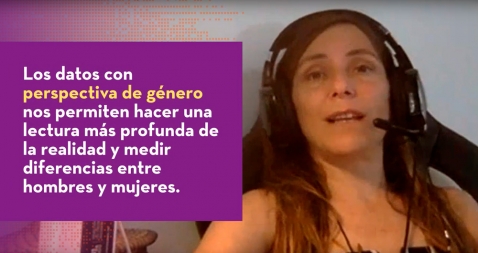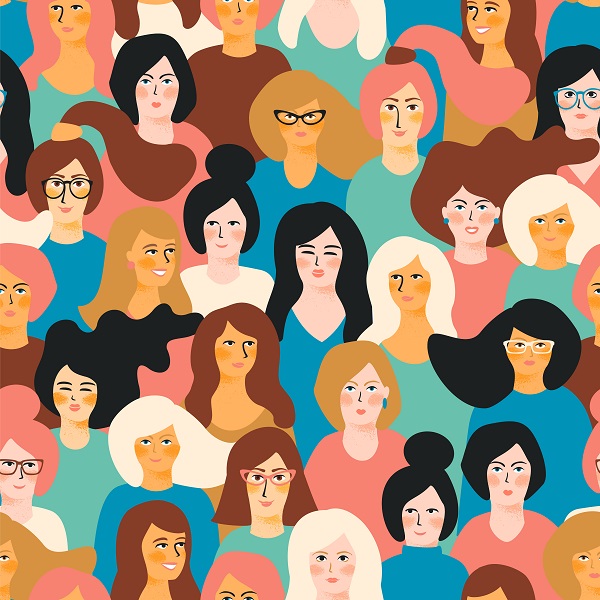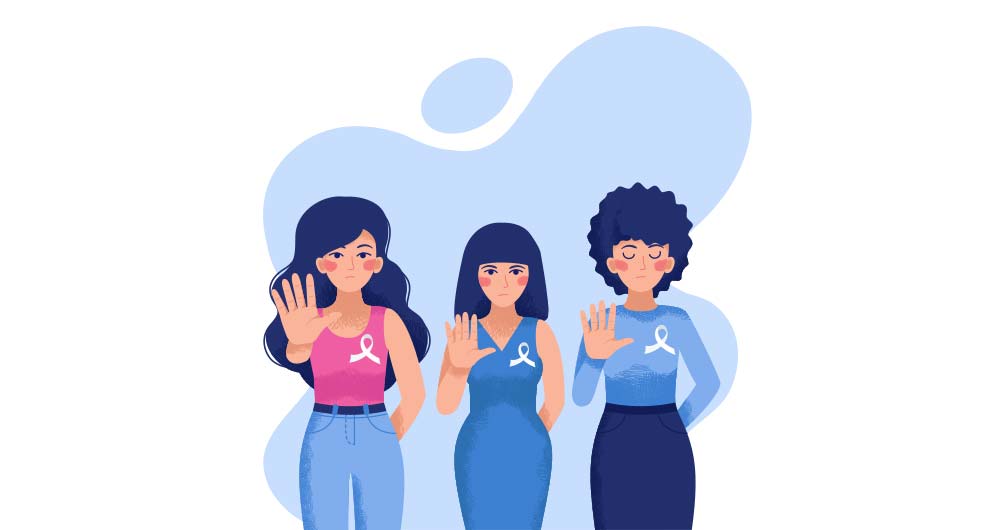Interview with Thais Ruiz de Alda, founder and CEO of Digital Fems
Fecha: 05-09-2022
Nombre: Thais Ruiz de Alda
Sector: Science and technology
Organismo, Institución o Empresa: Digital Fems
País: Spain

Today, data drives the world. It conditions public policies, the behaviour of algorithms and the decision-making of many companies. That is why it is important to have figures that correctly represent reality, i.e. that take into account all variables, including gender.
Thais Ruiz de Alda is founder and CEO of Digital Fems, an entity that designs projects to increase the presence of women in technological environments. In addition to consultancy tasks and the design of equality policies, Digital Fems carries out projects based on data science with a gender perspective. In this interview, Thais talks about the current situation and the challenges in this field (video only available in Spanish).
Full interview:
1. Why is it important to have gender-sensitive data?
Gender-sensitive data is a tool to measure various aspects, in a differentiated way between men and women, between different sexes.
It also serves to measure reality in terms of gender identity, if information is available. Finally, there are subjects, areas of data processing, where it is essential to include intersectional perspectives, such as gender or origin. For example, when data is collected on the use of health services, we can see differentiated effects depending on whether the patients are of different sexes, or for example in the use of public transport, it is important to identify the sex of the person using the service, in order to design a service in accordance with the needs of the passengers: space for breastfeeding, space for carrying children, safety and avoidance of sexual harassment or other types of aggression. The problem we still have today is the lack or non-existence of this type of data. The famous gender data gap. That is why many organisations say that without data with a gender perspective, equality is not possible. Without GenderData , equality is not.
2. What is the current status of this type of data? You indicate that there is a gender gap in the data…
There is a tremendous gender gap in data. In general, and since the era of open government began in 2007, public administrations have been the ones that started opening data. This makes sense, given that administrations have been the generators of official statistics and the owners and guardians of some of the data that citizens create through the use of public services. According to the United Nations, by December 2020, we had only 39% of the gender-sensitive data we need to monitor the SDGs. So, from the public authorities' side, we still have some way to go. I think the future outlook for this kind of data is positively good, because we are on the right track, making progress in creating this kind of data. This is where we can say that, in parallel, there are civil society organisations that are also working on the generation of gender-sensitive data. Many women's organisations have realised the need to create and collect this data in order to alleviate this gap. In fact, right now, civil society organisations are the ones that should be pushing and lobbying to show the value of this type of data and pushing for public authorities to generate it. Now we need other stakeholders such as companies or academic environments to prioritise this need and generate data with a gender perspective in order to understand issues that affect men and women differently. The topic could be the subject of a doctoral thesis... but in short, the first stumbling block to be resolved is to produce data with this perspective, which has been ignored, and once we have these data, we will be able to read reality, measure it and draw conclusions that will allow us to make decisions with much greater precision.
According to the United Nations, by December 2020, we had only 39% of the gender-sensitive data we need to monitor the SDGs
3. Digital Fems, together with other organisations, has set up GenderDataLab.org, a repository of open data with a gender perspective. What kind of information can users find there? What are the challenges you have encountered in collecting and making this kind of data public?
Genderdatalab is a recently created space for experimentation and publication of datasets with a gender perspective, where visitors can choose to:
- Learn through articles, recommendations, guides or best practices and information collected on the discipline of data with a gender perspective. It is a space of common use because after registering, users can create datasets and publish them, with open licenses to publish their study reports, etc.
- Register and publish datasets; it is a space of common use because after registering, users can create and publish datasets, with open licenses to publish their study reports, etc.
- Download or use the API of the datasets, or simply visit the datasets and visualise them...
Despite our "youth" we have had diverse experiences: we have convinced organisations to publish their data, which contained the gender perspective, in open format and they have had some fears that open data is susceptible to manipulation. Therefore, we have evangelised about open data to non-digitised communities. On the other hand, we have seen how, on the contrary, organisations that wanted to publish gender-inclusive reports, opened up to do so, and asked us for help and support in implementation. We have also detected some fears in the use of the platform, i.e. resistance to publish datasets for "fear" that they are not well designed, etc. and that is why we are now going to publish mini training courses to familiarise users with the functionalities of the platform, as well as with the contents and encourage the members of the platform, which already has a few hundred people registered.
4. One of the areas where data can also help us is in the fight against gender violence. This is the field of work of your project DatosContraelRuido.org, where you use Big Data techniques to analyse thousands of data files on the subject. How have you developed the project and what has been its impact?
The DatosContraElRuido.org project was the first project that we launched at Digitalfems in terms of gender data activism. We developed the project so that, through the application of our methodology, complex legal concepts could be understood in data visualisations, processed and analysed from a gender perspective, which could explain the presence of male violence in Spain, or the typology of violence that is exercised with the data that the Ministry of Justice and the General Council of the Judiciary publish. With all these thousands of lines of information, we have been able to create an understandable story for ordinary people, and to design communication campaigns that allow us to understand the dimension of male violence.
Each time we publish an update of the data, we achieve a relatively important media impact, which has allowed us to be invited to many forums, especially in the context of male violence, to explain three issues:
- Creating technology or technological solutions with a gender perspective helps to broaden the field of vision of the problems. We need more women technologists who can address social issues.
- GenderData is a discipline of data science that is not only concerned with data collection, but also applies to the way data is structured and processed for analysis.
- All data can be downloaded from GenderDataLab.org so that anyone can in turn process the data and expand the scope of analysis.
The social impact we are aiming for is to clarify the high prevalence of male violence, based on official, undeniable data.... and to raise social awareness about it. For us, DatosContraelRuido.org is an open and accessible tool for society to know the reality of a type of violence that needs to be spoken out loud and clear. If drugs, traffic accidents and public safety are areas of public interest, so too is the violence that some men inflict on women. Seventy per cent of complaints are filed away...
DatosContraelRuido makes it possible to understand complex legal concepts in data visualisations, processed and analysed from a gender perspective. The aim is to explain the presence of male violence in Spain, or the typology of violence that is exercised with the data published by the Ministry of Justice and the General Council of the Judiciary.
5. In your opinion, what should be the strategic actions to generate gender-sensitive data from an institutional perspective?
We live in data-driven societies, and we are getting more and more... so it would make perfect sense to take into account the different tools, methodologies and processes that help to generate the best possible quality data. Here it is very clear that we need an action plan to make this possible.
First and foremost, training must be provided to individuals, departments and teams responsible for maintaining datasets or with the potential to create datasets within the public administration. It is necessary to invest in training the people who manage data generation. In fact, it is a "leg" of what is meant by digitising or digitally transforming public administration.
The second is to promote the creation of this type of data through administrative instruments. For example, the European Commission announced in 2020 that beneficiaries of its research grants would have to incorporate sex and gender analysis in the design of their studies, probably due to the experience of COVID-19 and vaccines.
The third is to raise awareness of this new discipline, and the benefits it would bring, but this without the other actions is useless. And most importantly, without budgets to incentivise change or put in place elements of innovation, we do nothing....
First and foremost, training must be provided to individuals, departments and teams responsible for maintaining datasets or with the potential to create datasets within the public administration.
6. Although it is a sector in constant growth, women are still a minority in work environments linked to the technological field. What are the reasons behind this situation? What measures should be taken to change it?
It is complex because this reality is found all over the planet, countries and territories. One of the strongest reasons is that there is a strong presence of gender stereotypes about "technology". There are many, many studies that show how even from an early age, girls and boys associate technology with masculine skills. Let's be aware that in the cradle of tech culture, Silicon Valley, there is a term that is constantly used to define traits of corporate cultures: Brogrammer, a fusion between brother and programmer.
Stereotypes operate invisibly, and are one of the reasons why there are no women university students in specific engineering-related fields, and therefore there are also low rates into professional environments. It is said that women represent approximately 30% of the total number of employees in the tech sector, in a sector whose growth rate is 10% per year, vs. 0.4%, which is the rate of growth of the employment rate in the Eurozone. So the recruitment rate of female technologists is low because there are few of them, but this rate continues to fall as careers develop and the retention of female talent is an unresolved issue in the tech sector.
The solution to this is complex, because it implies that on the one hand, public policies must be activated to generate actions that promote a greater female presence. For example, Barcelona City Council has been a pioneer in regulating and setting criteria and means to change the trend of the sector (the government measure is called BcnFemTech). On the other hand, corporate policies must also and above all be activated among the companies that form part of the sector through the creation of measures that encourage the entry of more women, and the retention of this talent, which also has a direct impact on the company's profits: the more diverse people who design software, the better and more effective it will be, as the Bill and Melinda Gates Foundation says.
The recruitment rate of female technologists is low because there are few of them, but it is also because this rate continues to fall as careers develop and the retention of female talent is a pending issue in the tech sector.
7. Can you tell us about Digital Fems' next lines of work in the field of open data?
Well, we continue to work with data from some of the organisations we collaborate with, for example with CIMA, where we follow up on their reports on the presence of women in film, and we monitor the evolution of the number of women working in the industry, directing films or scriptwriting them, and we calculate the gender gap. We are also going to publish openly two works we have done this year: a survey of companies based in Catalonia about women's roles and tasks in technological environments, and a report and dataset about women in tech environments in Spain. We are very happy because these two reports will shed light on the reality of women technologists in Spain. By the last quarter of 2022 we will probably be working on a data and music project as well, through EllesMusic: the music sector works with non-standardised metadata, and gender should be incorporated as an element of metadata.














